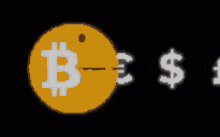Posted on February 10, 2025
AI-powered Blockchain
Workik.com is one of the platforms that offers an AI-powered Blockchain Code Generator. Here’s how it works and what it offers:
Functionality: It uses AI to help you generate, optimize, and deploy secure smart contracts for various blockchains like Ethereum, Solana, Polygon, and others.
Ease of Use: You can describe what you want your smart contract to do in natural language, and the AI will generate the code for you. No coding experience is necessary.
Features:
Smart Contract Generation: From basic to complex contracts based on your description.
Code Optimization: The AI can refine the code for better performance and security.
Security Checks: It runs through various checks to ensure the smart contract’s security.
Deployment: Assists in deploying your contract to the blockchain of your choice.
Supported Blockchains: It includes support for major blockchains, allowing you to work with the ecosystem that suits your needs best.
User Interface: Designed to be user-friendly, aiming to make blockchain development accessible to everyone, not just developers.
Cost: While the basic generation might be free, premium features or deployment might require payment or have some form of monetization.
Limitations: As with any AI-generated code, it’s crucial to review and possibly audit the code before deploying something critical to the blockchain due to potential security vulnerabilities.
If you’re interested in using this tool or want to explore more about how it works, you might want to visit their website to see live demos or tutorials. Remember, when dealing with blockchain and smart contracts, security should always be a top priority, so even AI-generated code should be scrutinized by experts before live deployment.
-
Threat Detection and Prevention:
-
AI algorithms can monitor blockchain networks for suspicious activities or patterns that might indicate an attack or fraud. By using machine learning, AI can learn from historical data to identify anomalies in real-time, thus preventing attacks like 51% attacks or double spending.
-
-
Smart Contract Audits:
-
AI can be employed to audit smart contracts for vulnerabilities. Tools powered by AI can analyze code to find bugs or potential exploits before they can be maliciously used. This is crucial as smart contracts are self-executing and immutable once deployed, making pre-deployment checks vital.
-
-
Behavioral Analysis:
-
AI can analyze user behavior within blockchain networks to detect unusual patterns that could signal unauthorized or fraudulent activities. This includes monitoring for changes in transaction frequency or amount, which might indicate a security breach.
-
-
Enhanced Authentication:
-
By integrating AI, blockchain systems can employ more sophisticated authentication methods, such as biometric verification, making unauthorized access much harder. This can be particularly useful in decentralized finance (DeFi) applications where identity verification is key.
-
-
Predictive Security Measures:
-
AI can predict potential security threats by analyzing current and historical data, allowing for proactive security measures. This might include forecasting network vulnerabilities or potential attack vectors.
-
-
Fraud Detection:
-
In areas like cryptocurrency transactions, AI can detect and flag fraudulent transactions by analyzing patterns, transaction speeds, or unusual behaviors, enhancing trust and security in the system.
-
-
Complexity: Implementing AI in blockchain security can be complex, requiring specialized knowledge to ensure the AI is correctly integrated and doesn’t introduce new vulnerabilities.
-
Bias and Errors: AI systems are only as good as their data; poorly trained models or biased datasets can lead to ineffective or incorrect security measures.
-
Privacy Concerns: While AI can enhance security, the data used for training AI models or for real-time analysis must be handled with care to protect user privacy, especially in blockchain’s decentralized environment.
-
Scalability: AI solutions need to scale with blockchain networks, which can grow rapidly, without impacting performance or security.
-
Regulatory Compliance: AI in blockchain must comply with evolving regulations regarding data privacy, security, and AI ethics.
-
Companies like CertiK use AI for auditing and securing smart contracts and decentralized applications (dApps).
-
Projects like Chainalysis leverage AI to monitor blockchain transactions for signs of money laundering or other illicit activities.
-
AI is also used in platforms like iExec for privacy-preserving AI computations through decentralized confidential computing.





 Bitcoin
Bitcoin  Ethereum
Ethereum  Tether
Tether  XRP
XRP  Dogecoin
Dogecoin  Bitcoin Cash
Bitcoin Cash  Zcash
Zcash  Monero
Monero  Litecoin
Litecoin  Wrapped SOL
Wrapped SOL  PAX Gold
PAX Gold